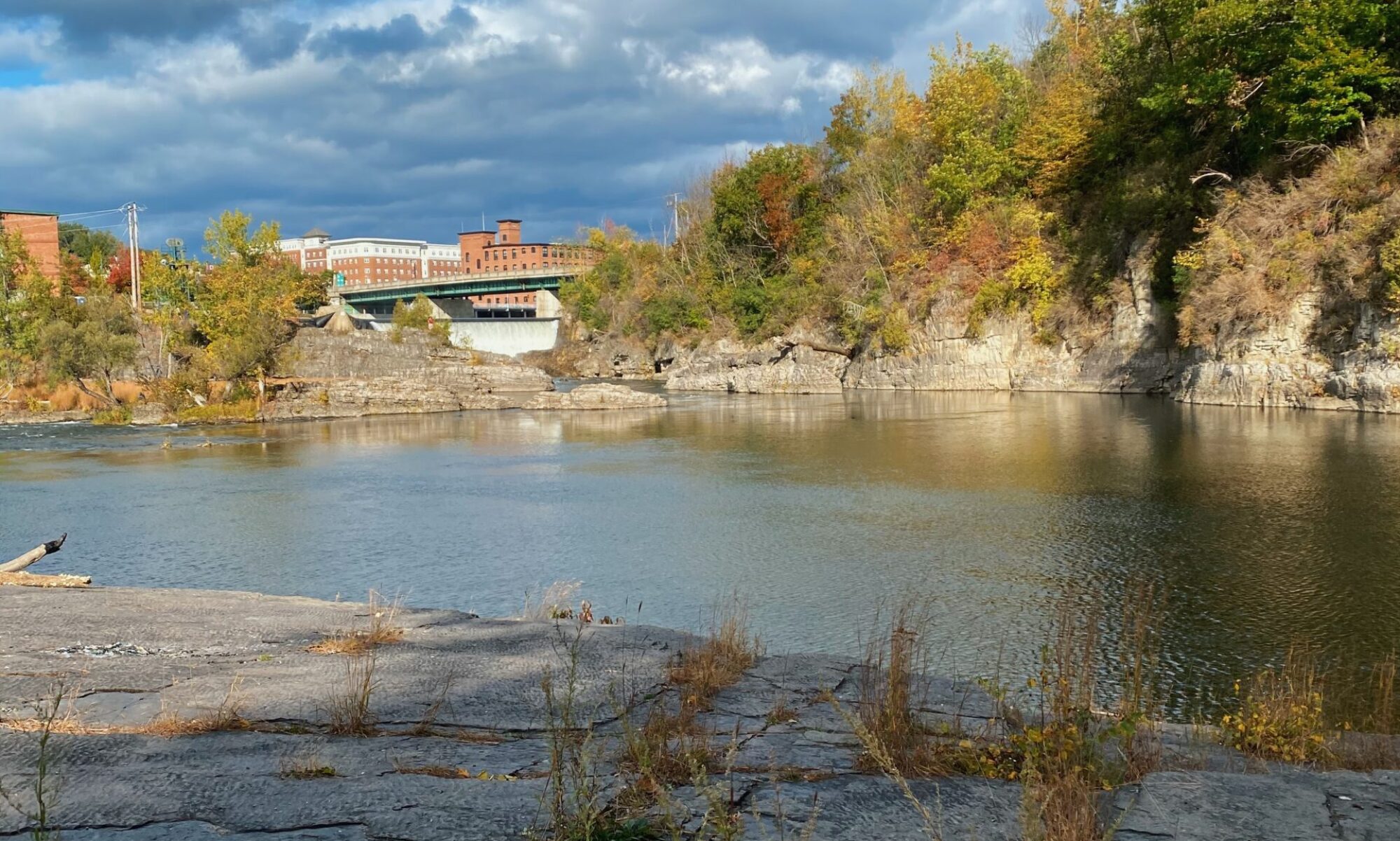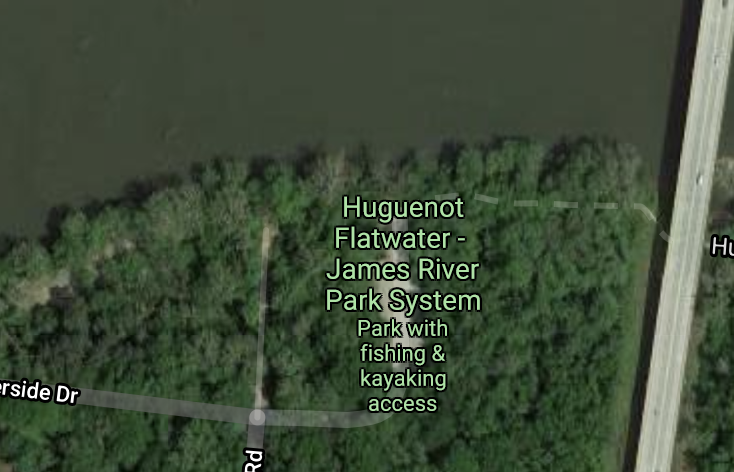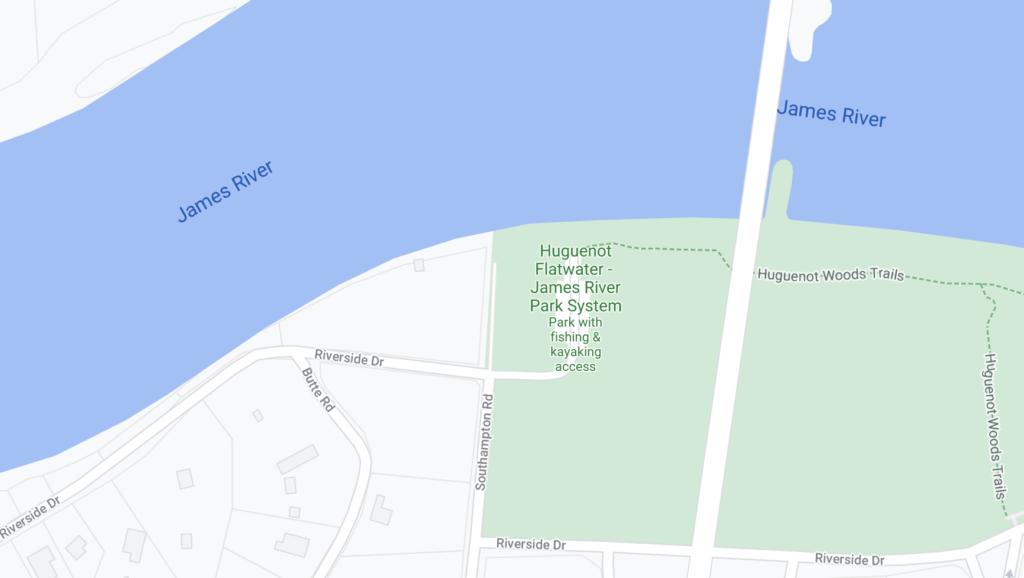Located on the shore of the James River in Richmond, Virginia, Huguenot Flatwater is a beautiful spot for hiking, swimming, and fishing. It is the westernmost section of the James River Park System which is a network of the publicly owned parks in the city along the river. Huguenot Flatwater, along with the other parks on the James, serve as vital riparian buffers. Because most of these parks are in urban parts of the city, they help decrease and filter runoff and stormwater that is abundant due to the amount of impervious surfaces from suburban and urban development. The park also serves as a recreational site. There is a boat ramp that allows easy access to this slow-moving part of the river making it perfect for kayaking, canoeing, and boating.
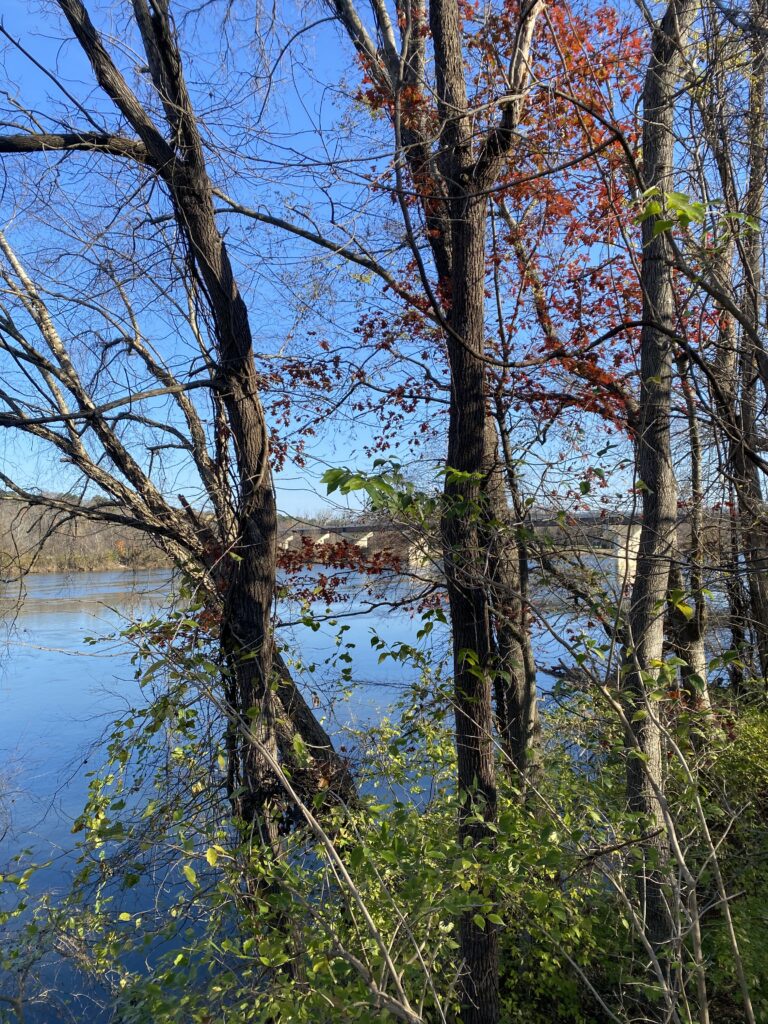
Nearby bridge is visible through the trees during winter 
The land across the river from Huguenot Flatwater is owned by a railroad company. Its tracks run beside the James for several miles. 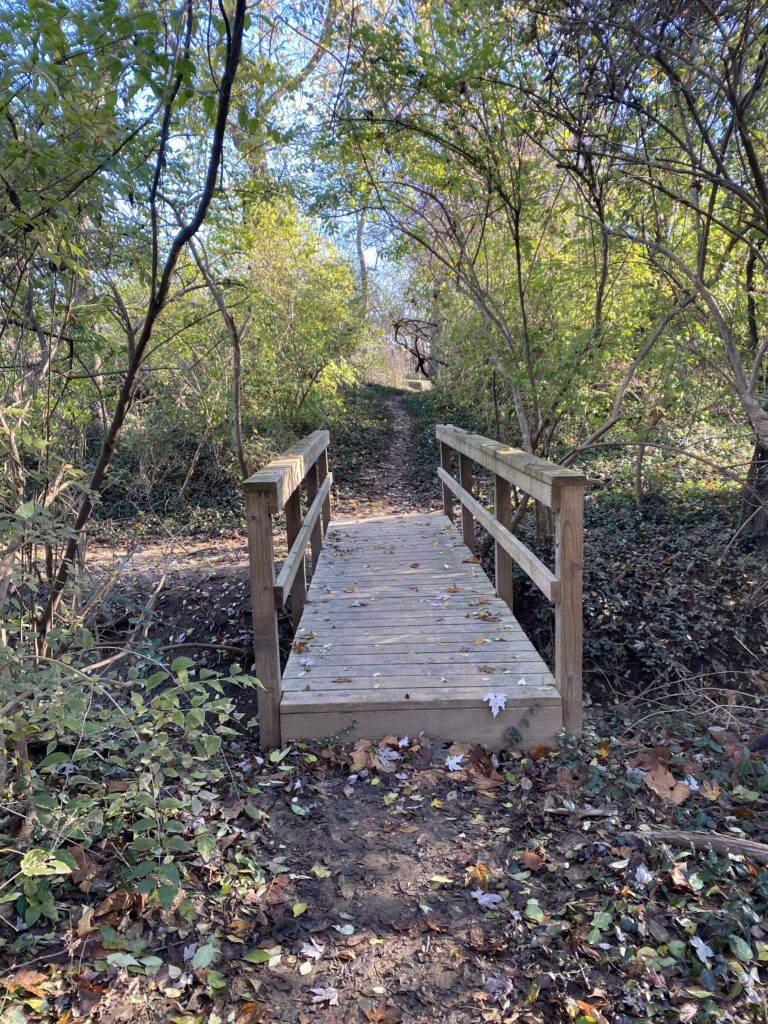
This small bridge crosses a stream that flows into the James 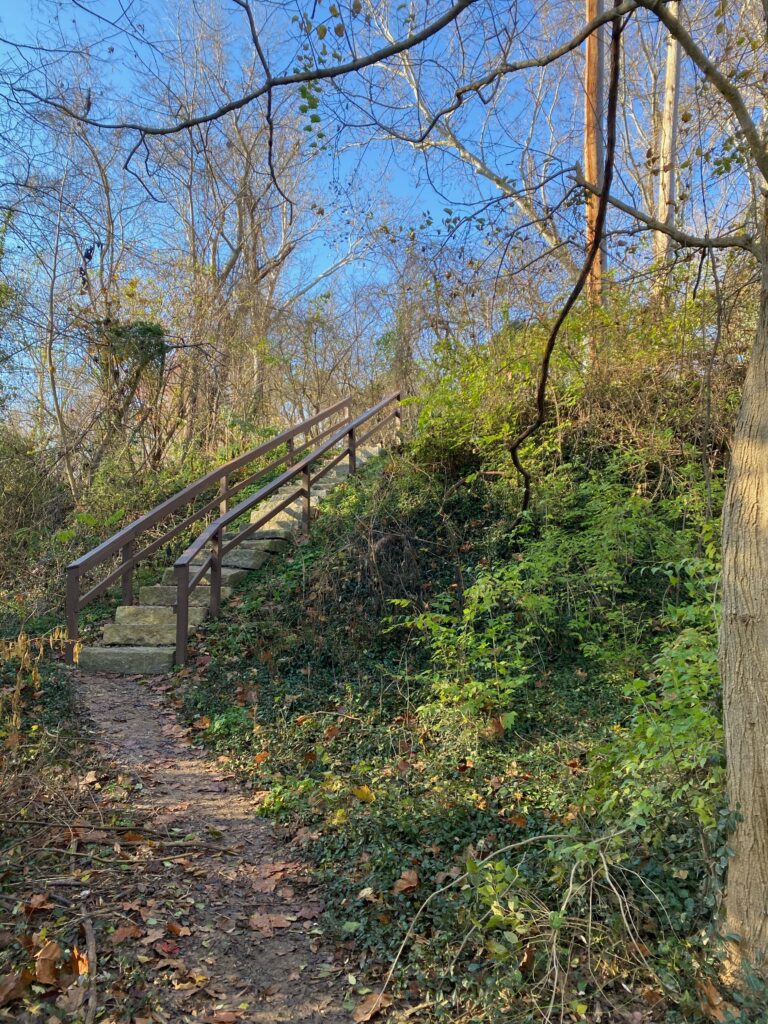
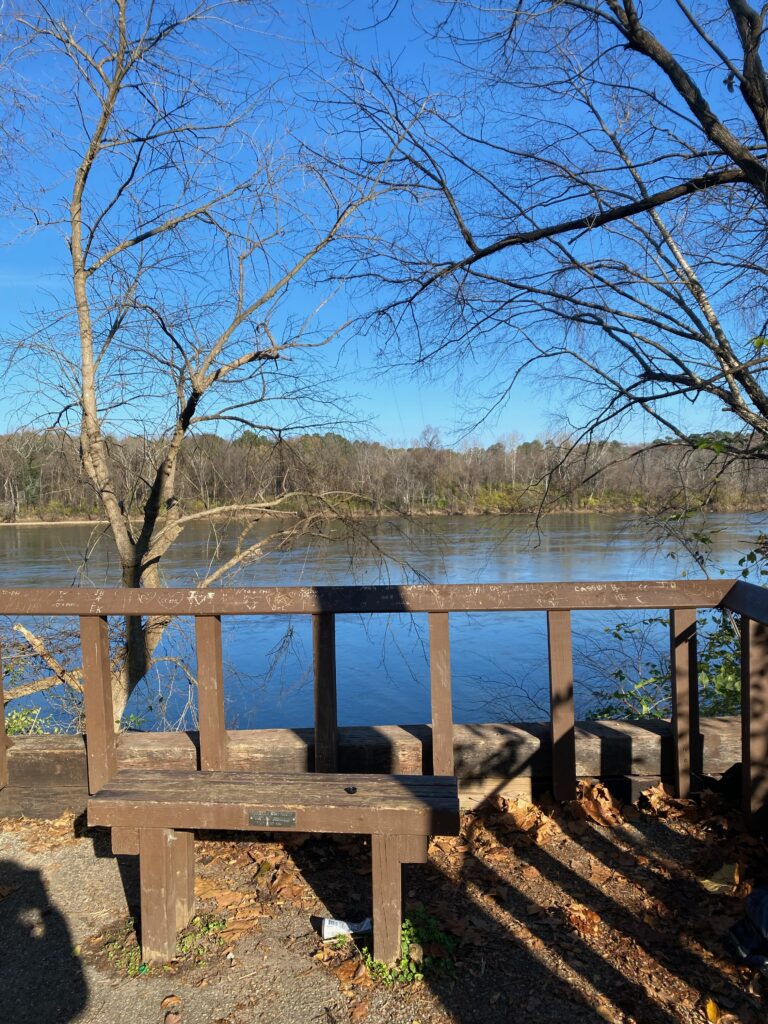
This bench sits on what used to be a bridge across the river. Today, the new bridge is just a bit downstream.
Huguenot Flatwater shares many similarities with Salmon Hole on the Winooski. The most obvious being its location on the shore of a river. Proximity to rivers has a large impact on the species that can survive due to flooding, the type of sediment, and erosion. Small shrubs were abundant in both sites because of their flood-resistant qualities. Like Salmon Hole, this location still had green vegetation unlike the rest of Richmond’s natural areas because of its location near water. The two parks are also situated near major roads and a bridge, contributing to noise pollution. A good deal of litter is present in both sites, too, because they are well-visited parks.
The Winooski and the James both have an issue with eutrophication. Upstream agricultural land is a huge contributor of nitrogen and phosphorous to the water that results in deadly algae blooms. Many of the issues that Richmond’s section of the James face is due to upstream actions, so the James River Park System struggles to resolve issues caused by nutrient pollution. The Winooski also runs through agricultural areas that contribute to Lake Champlain’s phosphorous problem.
These two locations also have many differences because of their climates. Virginia is a far more temperate location and Huguenot Flatwater is home to southern species like sycamore trees, black willow, and coastal plain willow. Though I noticed a few overlapping species like maples and red oak trees. Huguenot Flatwater also had more soil and no exposed rock like Salmon Hole so there was more vegetation in general.
